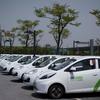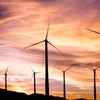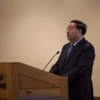Renewable and Low-Carbon Electric Power and Grid Integration
《中国会拯救地球吗?》新书研讨会
. 2019. “Gasification of coal and biomass as a net carbon-negative power source for environment-friendly electricity generation in China.” Proceedings of the National Academy of Sciences, 116, 17, Pp. 8206-8213. Publisher's VersionAbstract
2019
Apr
11
2019
Feb
20
2019
Mar
07
. 2018. “Hybrid life-cycle assessment for energy consumption and greenhouse gas emissions of a typical biomass gasification power plant in China.” Journal of Cleaner Production, 205, Pp. 661-671. Publisher's VersionAbstract
. 2018. “Power system capacity expansion under higher penetration of renewables considering flexibility constraints and low carbon policies.” IEEE Transactions on Power Systems, 33, 6, Pp. 6240-6253. Publisher's VersionAbstract
《金融时报》报道中国项目关于电动汽车充电方式对中国环境影响的最新研究
. 2018. “Changing carbon content of Chinese coal and implications for emissions of CO2.” Journal of Cleaner Production, 194, Pp. 150-157. Publisher's VersionAbstract
评论:全球电网是否是通向低碳未来之路?
推广电动车会对中国环境产生什么影响?车辆充电方式是关键!
哈佛大学中国项目论文位列《自然科学报告》2017年阅读次数最多的100篇论文之一
中国国家电网公司前董事长刘振亚就全球能源互联网在哈佛大学发表公开演讲
. 2018. “Impacts of fleet types and charging modes for electric vehicles on emissions under different penetrations of wind power.” Nature Energy, 3, Pp. 413-421. Publisher's VersionAbstract







